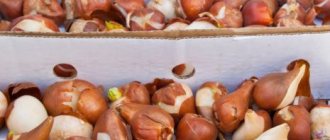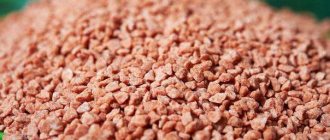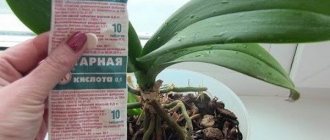Important point
Before we begin to consider the main issue, you should pay attention to the fact that if you feed your chickens only wheat germ, it will not bring any benefit. Any animals and birds, especially “productive” ones, must receive different nutrients from a large list of foods, just like humans. That is why you should think about creating a complete, proper diet for your birds. All the substances that birds receive from food must completely meet the needs of laying hens, otherwise, instead of large eggs, you will get tiny ones.
How to germinate grain for chickens in winter at home
I recommend germinating cereal grains for laying hens throughout the winter. It is better to germinate barley, rye, oats and wheat in trays, seedling boxes, pots and baking dishes. Do you have a lot of different utensils in your household? Then it's very easy to do.
How long does it take to germinate grains? The most optimal is 7-10 days. Look, as soon as the second green arrow goes, you can feed the treat.
The process may take up to two weeks!
Sprouted grains increase nutrients almost sixfold. By the way, their digestibility increases, so you get more bang for your buck, so to speak.
Sprouted grains, in addition to the main diet, reduce feed costs, improve the taste of eggs, and make the yolks bright. Of course, the productivity of laying hens increases and the health of feathered workers improves.
The benefits of sprouted wheat
Before sprouting wheat for chickens, you should also familiarize yourself with the benefits of this product. It should be noted that even some people include healthy sprouted wheat in their daily diet. Such grain helps birds accumulate energy potential. This is explained by the fact that at a certain time of development, wheat accumulates many useful things and elements, thereby bringing the greatest benefit to animals. Sprouted grain, as a medicine, can cope with the following problems in chickens:
- Digestive problems.
- Small eggs.
- Low immunity.
- Weak muscle and skeletal system.
- Slow metabolism.
- Poultry obesity.
Possible harm
Before germinating wheat for chickens, special attention should also be paid to the possible harm that comes from this product. However, this only happens if you overfeed the birds. The danger will be that sprouted wheat accumulates a large amount of iron. Given the small mass of birds, an excess of this substance can provoke a deterioration in a variety of health indicators in birds. It is necessary to observe moderation when feeding chickens. It is believed that the maximum amount of wheat in the daily diet should be no more than 30% of all products.
Grain selection
The sprouted grains must be of high quality, because the properties of the resulting sprouts from the grains will directly depend on this. You can buy wheat at the market, in a store, or in a country farm. When purchasing this product, you need to check its quality. Make sure that the cereal is free of impurities and has a golden dark brown or light brown hue. Don't skimp on your birds. Be sure that the increase in egg production in the near future will pay for all the money spent, while you will be calm about the health of your charges.
Soaking the grain
So, how to properly sprout wheat for chickens once you have already bought it? To do this, you need to soak the grains in a deep container. However, water should not overflow from the container. As containers you can use a basin, a bucket, a plastic bottle of plain water with the top cut out, a plastic bathtub and much more. However, experts do not recommend soaking in a metal container, since the metal draws out all the beneficial substances.
How to germinate wheat at home for chickens further? You need to pour water into the container. If the grain was stored in a warm place, then the water temperature should be from 40 to 45 degrees. But if the wheat has been in the cold for a long time, then all of it must be filled with hot water. Thanks to this, the grains will awaken from the cold. Please note that the final temperature of the mixture after adding hot water to the cold wheat should be around 45 degrees.
Wheat germination technique
The good news for those new to poultry farming is that sprouting wheat does not require any special skills or tools. Anyone can turn ordinary grain into something incredibly healthy. Carefully read the step-by-step germination instructions below and repeat point by point in the same order.
Step #1: choosing wheat
Sprouted wheat must be of high quality, since the properties of the sprouts emerging from the grains directly depend on this. You can buy it in a store, market or country farm. When purchasing, check the grain for quality. The cereal must be free of impurities and have a golden light or dark brown color.
Carefully inspect the grain before purchasing to assess its quality
Don't skimp on your chickens. A large increase in egg production will pay for all the money spent on laying hens, and you will also be calm about the health of your charges.
Wheat is sprouted not only separately, but also mixed with other grains. By mixing several types, you will make an incredibly healthy supplement.
Step No. 2: soak the grain
Soaking the grain is done in any deep container so that the poured water does not overflow. Suitable for this purpose:
- bucket;
- pelvis;
- a plastic water bottle with a hole cut out;
- plastic bath, etc.
It is believed that it is better not to soak grain in metal containers, since metal has the ability to draw out useful substances.
Soaking grain is done in any deep container
Water is poured into the selected container. If you stored the grain in a warm room, pour in water at a temperature of 40-45°C. In cases where the millet has been in the cold temporarily or for a long time, fill the entire mass with hot water. This is necessary to awaken the grains using heat shock.
Note! The final temperature of the resulting mixture, after pouring hot water into the cold grain, should also be approximately 40-50°C.
Step No. 3: soak the resulting mixture
The resulting mass after mixing grain and water must be placed in a dark and always warm place. Cover the container with a lid and leave for 15 hours. There is no need to do anything else at this stage of germination.
The resulting mixture is kept in the dark
Step No. 4: laying out the grains
After the period specified in the previous step has expired, remove the wheat from the container. If there is any excess water at the bottom of the tub, carefully drain it. Take a new, clean tub or spread oilcloth on a surface protected from cold and drafts.
You can use regular gauze as a wrapping fabric.
Spread the grains over the surface so that their layer is not too thick, otherwise the wheat will begin to rot and the work done will go down the drain. Find a scrap piece of natural fiber fabric, soak it in warm, preferably non-chlorinated water, and place it on top of the spread grain.
To prevent the fabric from drying out, it is necessary to periodically repeat wetting with warm water.
Step #5: Feeding Wheat to Chickens
After two days of being under a damp cloth, the wheat will produce juicy sprouts. Some poultry keepers recommend waiting an extra day to achieve long, strong shoots, but it is not necessary to spend extra time. Here is a nutritious product completely ready for chickens to eat.
However, it should be noted that by waiting for the sprouts to be 5-6 millimeters long, the farmer will seriously increase the vitamin A content in the chickens’ diet.
You can feed chickens with sprouted grains immediately, or you can wait until the sprouts increase
Interesting fact. After waiting for 6 mm sprouts, cut them with scissors and mix them into the chickens' feed. Then cover the used wheat with a damp towel again. This way you will get even more healthy and tasty grains sprouted in the second round.
Do not soak large quantities of wheat at once. Firstly, “the first pancake is lumpy,” as they say in our homeland. Secondly, sprouted grains are not stored for long. So that the precious sprouts do not disappear along with them, prepare grains for two or three feedings of the wards.
Laying out
What to do next? How to properly germinate wheat for chickens in winter? When 15 hours have passed, the wheat must be removed from the container and placed on a tray. If excess water has formed on the tray, it must be drained. Then take a clean, new tray, or spread oilcloth on a surface that is protected from drafts and cold.
The grains are laid out on the surface in such a way that the layer is not too thick, otherwise the wheat will begin to rot. Next, take a piece of fabric made from natural fibers, moisten it in warm, non-chlorinated water, and place it on top of the grains. Please note that the fabric must be moistened periodically to prevent it from drying out.
The final stage
So, we have almost learned how to quickly germinate wheat for chickens. At the last stage, after 2 days of keeping the wheat under a damp cloth, it should sprout new shoots. Some companies recommend waiting one more day so that they grow strong and long. However, this is not necessary. Here is a ready-made nutritious product that can be used to feed chickens.
However, pay attention to the fact that when the length of the sprouts is 6 mm, the farmer will improve the diet of the birds due to the vitamin A content.
In conclusion, it is worth noting that it is not recommended to soak large quantities of grain. The fact is that the sprouted product can be stored for a long time. To prevent these precious and healthy sprouts from spoiling, the finished grains are used for 2-3 feedings of birds.
Sprouting: basics of soaking technology
Soaking is one of the most popular ways to germinate wheat. For everything to go smoothly, the room where the work will be carried out must be at least +20°C. Also prepare a container washed with potassium permanganate and proceed:
Sprouted wheat
- Prepare grain at the rate of 15-20 g per chicken.
- Pour the food into the container. Fill it with cool water about +15...20°C. The water should be 2 cm above the grain level.
- Poultry farmers advise starting procedures in the evening. After 12 hours, the grain will have absorbed enough liquid. Transfer some of it into a bag and place it in a dry container to drain the water.
- When the liquid has drained, put the bag in a cool place for about a day. By the next morning, the sprouted poultry feed will be ready.
- The remaining part of the soaked grain should be placed in another bag, allowed to drain and placed in a warm place. This food will germinate faster - you can feed the chickens by the evening.
- The most useful sprouted grain has sprouts no more than 3 mm - it contains the most valuable substances.
Don't be alarmed if the grain has not sprouted by the next morning. According to technology, the process can last up to 3 days. During this period, the feed should be mixed periodically. You can also soak it longer. For example, for 24 hours. However, the period should not be more than 3 days - this is dangerous with the risk of developing intestinal infections.
You can germinate wheat for longer - up to a sprout of 6 cm. Such greens are very rich in vitamin A. Just place the container with water in the sun. Make sure that the sprouts do not grow longer. They can be cut and given to the bird separately, and the grain can be soaked again to obtain a new portion of greens.
When to feed wheat to chickens?
If you are a caring owner, you can prepare such tasty and healthy food for your feathered livestock throughout the year. But if you don’t have the energy and time to prepare sprouted grains all year round, then you can add wheat to your diet only in winter and autumn.
There are several recommendations regarding feeding chickens with such a useful product. Experienced farmers advise giving sprouted wheat to birds in the evenings, when they go to sleep. In this case, the grains must be poured onto deep litter in the chicken coop.
There are many arguments in favor of feeding birds sprouted wheat during the day and at night. Some farmers argue that it is also necessary to feed chickens with sprouted wheat during the day. After all, it is at this time of day that chickens eat grain most actively, since they are constantly on the move and quickly work up an appetite.
In addition, it is recommended to feed chickens during the day if they are overweight. This way they won't overeat at night. Take this indicator into account if you raise these birds for slaughter.
What are the feeding standards for laying hens?
It is difficult to determine grain standards for feeding laying hens, since each breed has its own requirements. But on average, 50-100 grams of grain mixture per day is taken per chicken. If you increase the specified norm (over 100 g), the bird will begin to suffer from obesity and its egg production will sharply decrease. In winter, the amount can be increased by 20 grams, but not more, since during this period the birds’ metabolic processes are activated.
Approximate diet for egg-laying chicken breeds during the warm period (with an egg production of 165 pcs. per year)
A very important point in feeding laying hens grain is its size. Sometimes it is not crushed, but in this case it is absorbed worse and more slowly. Therefore, the breeder is recommended to grind the grain, but not too much. However, if food is given only on a schedule, and is not constantly in the coop, as is the case with brooder feeders, the birds are given whole grain at night (except for corn, it should always be crushed).
Increased beneficial properties during germination
What will change if a green shoot sprouts in wheat? Dry grains contain starch and complex fats, which the chickens’ body breaks down on its own, turning them into fatty acids and simple carbohydrates. The body expends a large amount of energy on this process, and not all substances will be absorbed.
In the case of germinating grain independently at home, the wheat produces within itself those processes that should be carried out by the bird’s body. Thanks to this, the process of processing and obtaining nutrients by the chicken body is much faster and easier.
In addition to such transformations, wheat contains a large number of amino acids that are necessary for the proper functioning of the bird's body. These amino acids strengthen the immune system and accelerate the metabolic process that occurs in the body of chickens. A large amount of minerals will provide support for the development of bone and muscle tissue, also affecting the size and size of eggs. Vitamins in wheat, belonging to various groups, will protect laying hens from all sorts of diseases, regulate hormonal levels, and at the same time contribute to the acquisition or maintenance of stable egg production.
What grain is best for chickens to sprout?
For laying hens, grain mixtures are prepared from grain, they are given whole or crushed, or mash is made. For this you can use millet, wheat, buckwheat, corn, oats, barley, sunflower. The introduction of grain into the diet of chickens has a positive effect on their egg production and provides birds with the most important vitamins and microelements for them.
The grain of each of the above crops has its own positive qualities:
- Sunflower acts as a supplier of energy for the body of birds and increases their egg production. Experienced breeders recommend introducing its seeds in winter. This will increase the birds' immunity.
- Barley is mainly recommended for feeding meat birds, such as broilers. Barley can be given to chickens throughout the year. The grain of the crop has sharp tips. This can damage the birds' digestive system. Therefore, barley is mixed with other feeds.
- Millet. This grain contains a lot of fiber. Therefore, it is introduced into the diet of young chicks. Chicken can be given millet with a boiled egg. Already grown chicks are prepared with a mixture of millet, eggs and chopped greens.
- Wheat is high in calories. It contains protein, which is easily and quickly absorbed by the bird’s body. Experienced breeders give chickens not whole wheat grain, but bran from it. During the summer, they should make up no more than 80% of the chickens’ total diet, and in winter - 40%.
- Oats. It contains many vitamins necessary for the rapid growth and egg production of laying hens. How to feed oats to chickens? The grain also contains a lot of fiber. The bird's body spends a large amount of energy to digest it. Therefore, oats should not make up more than 10% of the total diet.
Wheat is high in calories
Sprouted grains can be used to prepare special mixtures. They are used whole or crushed. Wheat, oats, and millet are used for this. You can also give chickens sunflower, barley, corn, and buckwheat.
The introduction of grains into the diet of chickens has a beneficial effect on the parameters of their egg production, supplying the body with valuable substances and microelements. Each crop has certain advantages:
- Sunflower – provides birds with energy and helps increase egg production parameters. Experienced experts advise using these grains in winter. They provide a strengthening of the immune system.
- Barley is primarily used to feed meat breeds of chickens. The product can be used all year round. It is worth considering that the grains have sharp tips, which can cause damage to the digestive organs. Therefore, barley is mixed with other feeds.
- Millet – it contains a large amount of fiber. Therefore the product is suitable for young birds. Millet chicken is given in combination with a boiled egg. Grown-up chicks require a composition based on millet, greens and eggs.
- Wheat is considered a very high-calorie grain. It contains proteins that are easily digestible. Experienced experts advise giving birds wheat bran. In summer they should make up a maximum of 80% of the diet. In winter, this figure is reduced to 40%.
- Oats - this product contains many vitamins that are required for the full development and increase in egg production of birds. The cereal also contains a large amount of fiber. Digesting oats requires a lot of energy. Therefore, its volume should not exceed 10% of all food.











